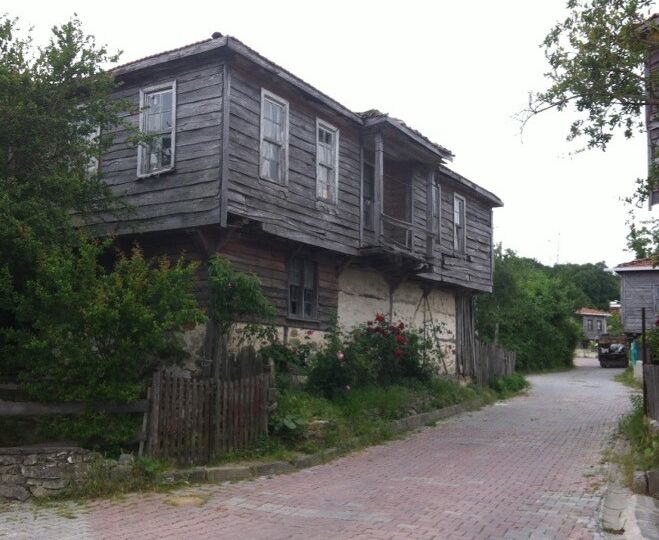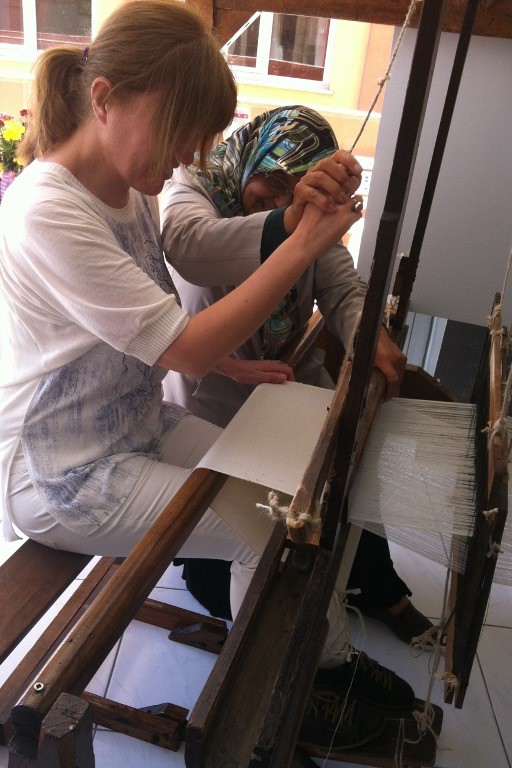
It was the end of May 2013 when what started with saving trees in the heart of Istanbul, at Gezi Park, quickly evolved into a nation-wide protest against an aggressive neoliberal development model that was not only causing the destruction of the magnificent city of Istanbul’s precious natural and cultural heritage, but, was infecting the heritage of various other parts of the country. I had just returned to Turkey after nine years of studying and working in the U.S., and because of my affection for Anatolia’s heritage, participating in the protests felt natural to me. The peaceful and in many ways inventive Gezi protests also spurred an enormous expression of public opinion. Besides social media platforms, people young and old, from all walks of life, were discussing various—at the time—hot button issues, rights violations, demands for democracy, and cases of environmental destruction in public forums in several of the city’s parks. It all seemed like magic, and eventually Gezi Park’s trees and memory were saved, but unfortunately, threats to the city’s heritage never ceased.
Around that time, news emerged about the “Kanal Istanbul” project, the construction of a canal that would cut through a western section of the provincial land, connecting the Black Sea to the Sea of Marmara. I remember listening to the artist and photographer Serkan Taycan’s project “Between Two Seas” during a workshop on potential cultural routes for Istanbul that we, the Küçükyalı ArkeoPark Project team led by Koç University’s ARHA faculty member Dr. Alessandra Ricci, had organized. The project’s goal was to enhance the Byzantine era monastic complex’s accessibility as well as its tourism potential. Taycan had developed a four-day walking route that follows the planned line of the controversial canal project. He pointed to the enormous transformation happening in the outskirts of the city, which I later saw with my own eyes while hiking around Arnavutköy, when we passed giant excavation holes created for the extraction of crushed stone used for various construction purposes and piles of old building rubble dumped in the middle of natural areas. Later, in February 2020, in an act of protest, I was walking along part of the route following the planned canal with the activist group “Ya Kanal Ya İstanbul Koordinasyonu” (Either the Canal or Istanbul Coordination Group) when we realized that the potential destruction this project would cause to the city is beyond words (see Fig. 1). The canal would not only cause immense harm to the last remaining fragile ecosystems, habitats, and wildlife immediately outside the city, but new housing projects planned along the canal would further increase Istanbul’s population, depleting its resources and contributing to further pollution. For now, the current Istanbul Metropolitan Municipality’s administration has been able to halt the project by winning a court decision that canceled all development plans. However, in a country where the economy is fueled primarily by large-scale development and construction projects, things can get reversed any time.

Fig. 1. The “Either the Canal or Istanbul” walk in February 2020 (photo: BOYTREK).
Going back to 2014, it was during my time at the Küçükyalı ArkeoPark project that I started to use ANAMED’s library. As someone relatively new to Istanbul, fascinated by its multi-layered history and historic neighborhoods, and as someone who enjoys discovering the Galata and Pera areas, I loved the fact that the ANAMED library is located in one of my favorite places of the city. Also, perhaps the beauty of the Merkez Han and ANAMED’s super-friendly staff, as well as the library’s warm atmosphere, have always been a motivation to get out and commute to Istiklal. Unfortunately, those times were also quite turbulent times for the country, particularly for the city of Istanbul. Random crowds on Istiklal and in other parts of the city became targets for acts of terrorism. During these difficult times, ANAMED provided us researchers a safe space to work in peace.
Over the course of two years, work conducted as part of the Küçükyalı ArkeoPark project had progressed significantly: the construction of a dighouse and visitor center was completed, the site’s accessibility to visitors significantly improved, and a site management plan developed. Furthermore, excavations yielded several interesting finds that were displayed at the Istanbul Archaeological Museums. Though small scale, these were significant contributions for the sustainability of the city’s heritage. However, on a larger scale, the city continued to transform and expand, unfortunately, mostly for the worse. In the years 2015–2016, as part of an EU heritage tourism project, I was visiting Istanbul’s sub-province of Şile and its villages to explore and interpret its not-so-well-known natural and cultural heritage in partnership with local communities. Şile is a beautiful, historic fishermen’s town northeast of Istanbul, right on the Black Sea. During visits to Şile’s villages, dispersed in a rural, lush landscape just outside of Istanbul, I noticed the construction of new main roads cutting through the rural landscape, eventually connecting to a third, northernmost bridge over the Bosphorus, which was also under construction at the time. The construction of the third Bosphorus bridge had started despite intense protests by environmental NGOs and activist groups that it threatened Istanbul’s last remaining “Northern Forests,” instrumental in regulating the city’s climate, besides hosting rich flora and fauna. Scientists and activists urged decision-makers not to allow a northern sprawl of the city to prevent the loss of these forest habitats. Despite warnings, the construction of the third Bosphorus bridge went ahead and eventually opened to traffic in August 2016. Eight years later, one wonders to what degree the bridge is being used efficiently. However, eventually, there is no doubt that over time, like a magnet, it will attract the construction of new residential complexes, office spaces, and shopping malls along main roads and highways.
When visiting Şile’s villages, it was a joy to learn more about the production of its famous chestnut honey with healing power, efforts to revitalize the Şile fabric (Şile bezi, a handwoven traditional cotton fabric) (Fig. 2), its local poets, its vernacular timber houses (Fig. 3), its Greek past, and many other heritages. Yet, it is hard not to mention here the disappointment I felt when I saw its newly restored landmark Genoese castle, which emerged as a completely rebuilt artificial structure. On a positive note, it was a delight to shop for organically grown produce and other locally produced food items such as chestnut honey at Şile’s “Earth Market.” Earth Markets are an international network of farmers’ markets established as part of the Slow Food movement to encourage local farmers to grow and sell organically grown produce (1).

Fig. 2. The author’s attempt to learn weaving the Şile fabric (photo credit: author).

Fig. 3. The village of Akçakese’s vernacular timber houses (photo: author).
Not long after, I was walking along Istanbul’s Land Walls with a colleague, interviewing residents for our project “Plural Heritages of Istanbul.” We asked our interviewees to walk us through their neighborhood and talk about specific locations or heritage important to them, with the intention to find out about their relationships with their surrounding heritage. At the end of our walking ethnographies with residents, we were astonished to learn about the diverse uses of the Walls. Over a period of decades, the Walls had become a significant aspect in the lives of residents. While some shared childhood memories of exploring the Walls’ spaces, climbing on them, gathering with friends, and playing games in the Walls’ spaces, others reported having picnics, growing vegetables, and even keeping pigeons around them. Yet another resident used the Walls’ interior spaces as a workshop for producing carpentry products. For some, they represented “home.” Perhaps most importantly, by listening to the residents’ stories and memories, we learned first-hand what really happened along the Walls, how the politics of nation-building and later neoliberal approaches to urban renewal were impacting the lives of people living in neighborhoods along the Walls. A recurrent theme that emerged from our interviews, therefore, was loss: the loss of a multicultural past, neighborliness, solidarity, and a sense of safety. That’s why, in ending my blog post, I would like to quote one of our participants, Hatice, who emphasized the significance of giving voice to ordinary people, to anyone in a locality, including outcasts such as drug addicts or criminals since they have lives and experiences too, during our closing conference at ANAMED and in her afterword for a book published on the project:
“Our conversations helped us to remember so many memories that we had half-forgotten. Getting to know new people [the other participants], listening to their stories… this was precious to us. They spoke the same language, saw the same Walls, and although some had different feelings, most of them shared common emotions that we found in our own memories. We realized that the past has never been an obstacle to the future for people like us who grew up with neighborhood culture and who still live in our neighborhoods. Although changes to the urban environment cause many things to be lost, there are also good works that give hope in our country. For example, what a privilege it is to be living next to the only surviving palace of Byzantium, to be able to follow its restoration works—a building connected to the Walls that we walked around in our childhood was a Byzantine Palace!”(2)

Fig. 4. Members of the project team “Plural Heritages of Istanbul” (Chris Whitehead (far right), Gönül Bozoğlu (second from right), and the author (left)) with participants Hatice (in black), her husband Yücel (taking the selfie) and Birol (standing behind Hatice) during the closing event of the project at ANAMED (photo: Yücel Demirbiçer).
NOTES
- (1) For more information on Earth Markets visit https://www.slowfood.com/biodiversity-programs/earth-markets/
- (2) Christopher Whitehead, Tom Schofield and Gönül Bozoğlu. Plural Heritages and Community: Co-production: Designing, Walking, and Remembering (NY: Routledge, 2021).

